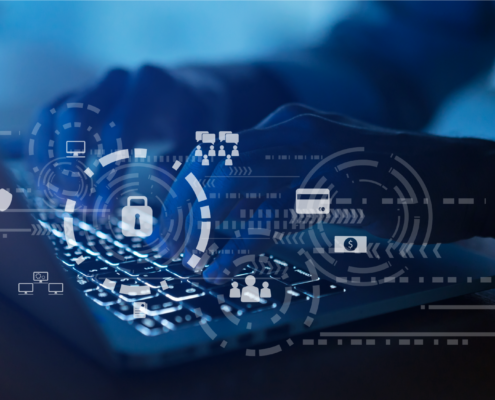
The Rise of Cyber Attacks on the Healthcare Industry
Cyber attacks can happen in many different ways. However, it’s not uncommon for cyber criminals to use attacks as a way to cause disruptions in normal business operations in order to steal personal data which is particularly worrisome for healthcare organizations.
Cyber attacks are not only getting worse, but they’re also increasing in number year after year. Institutions in the healthcare industry tend to be targeted due to their vital economic role, access to “high-value” information (e.g., social security numbers), and public safety attributes. As a result, these establishments need to be aware of threats they face and invest in strong healthcare cybersecurity.
Technology has managed to completely change the landscape of healthcare for the better. Today’s medical facilities are high-tech operations that use the latest equipment to perform complicated tasks. However, as these organizations become more reliant on digital solutions, they also grow more vulnerable to cyber threats.
A security report from IBM found that healthcare cyber attacks more than doubled in 2020—partially due to opportunists taking advantage of the COVID-19 pandemic. Nearly one out of four of all cyber attacks last year were ransomware attacks. But ransomware isn’t the only cyber risk healthcare organizations have to worry about.
The Top Five Healthcare Cyber Threats
Here are a few of the most common types of threats used against the healthcare industry.
- Phishing attacks and social engineering: Many data breaches occur because of errors made by staff members who inadvertently provide the means of access to cybercriminals. Phishing is the use of fake credentials or misrepresentation to trick others into allowing access to confidential information. In many cases, cybercriminals and hackers pose as trusted corporate partners or patients needing assistance. This can result in the release of confidential patient information or unauthorized access to medical records that could be used against your organization or your patients.
- Ransomware attacks: Ransomware is a form of malware that locks up critical processes on individual computers, networks, or servers. The ransomware attack usually occurs when a staff member opens an email or clicks on a link infected with the malware. The ransomware program then encrypts files on the computing system to render them inaccessible. In most cases, the responsible parties then demand a financial payment to provide an encryption key. Paying the guilty parties, however, is no guarantee that access will be restored to your organization. Avoiding ransomware attacks is the most practical solution for managing these cybersecurity risks.
- Loss or theft of computer systems: Laptops, computer systems, and other devices that contain or have access to electronic health records or other protected health information (PHI) must be protected against cyber attacks, unauthorized access, and physical theft. This is often best accomplished by creating an integrated security plan that incorporates information and data security along with physical security for your healthcare facility.
- Accidental or deliberate data loss: Accidental data loss can happen when an inexperienced colleague deletes information inadvertently or in an uncontrolled way. It differs from deliberate data breaches and data losses in motive alone. The adverse effects of unintended or malicious data loss can be catastrophic for your healthcare organization and can reduce patient confidence in your ability to provide the proper care for their needs.
- Attacks by hackers on medical networks and devices: Direct attacks by hackers often fall into the category of distributed denial-of-service or DDoS attacks. These cybercrimes occur when a user or multiple users flood your server with incoming traffic to prevent patients from accessing it. Hackers can also use advanced tools to identify passwords and login information. Using strong passwords and high-level encryption offers the best defense against these types of attacks.
Healthcare Cybersecurity Regulations
With the merging of IT and healthcare comes the need for protective security measures. These measures have come in the form of strict regulatory standards. The main IT security guidelines the healthcare industry follows are provided by the Healthcare Information Portability and Accountability Act (HIPAA).
It is a series of regulatory standards that outline the lawful use and disclosure of protected health information (PHI). This is different from personally identifiable information (PII) in that it contains an individual’s health records. As such, PHI is seen as more valuable than PII. According to the Center for Internet Security, the average cost of a healthcare data breach is $355 per stolen record compared to $158 for non-healthcare related data.
The stipulations set by HIPAA call for:
- Physical Safeguards: These are best practices for managing physical equipment that contains sensitive information.
- Technical Safeguards: Technical safeguards focus on how healthcare information is communicated. It defines how to secure the data and what needs to be done for authorized users to authenticate their identity.
- Administrative Safeguards: This is about the selection and implementation of strategies that keep a healthcare facility compliant with the HIPAA Security Rule.
Protect Against Cybersecurity Threats in Healthcare
Whether your business is in the healthcare field or your organization resides in a different industry, you need reliable cybersecurity. Meriplex specializes in cybersecurity, offering comprehensive services that protect your network from even the worst cyber threats.
Contact us today to learn more about this topic and the services we provide to keep your data secure.


